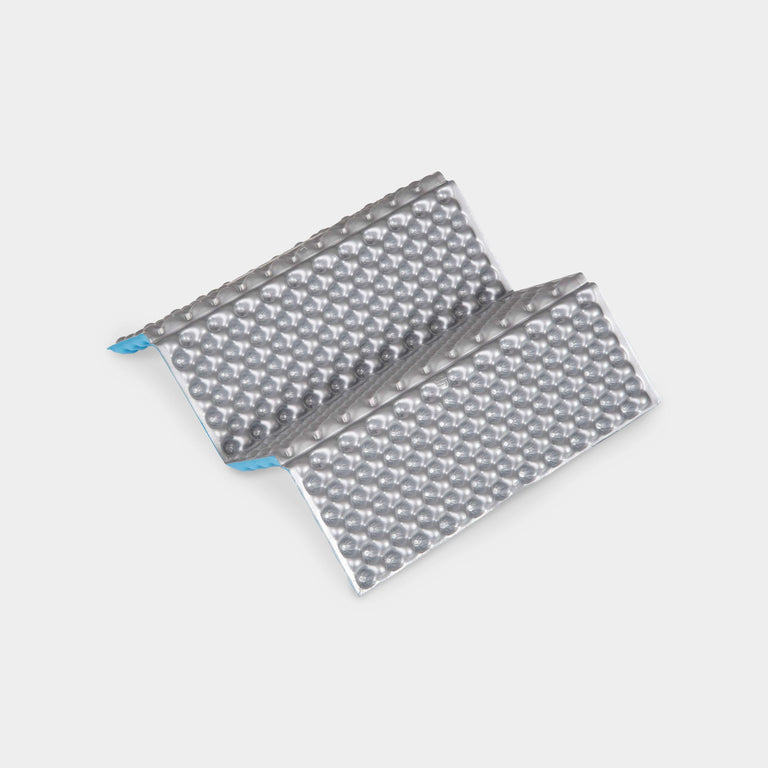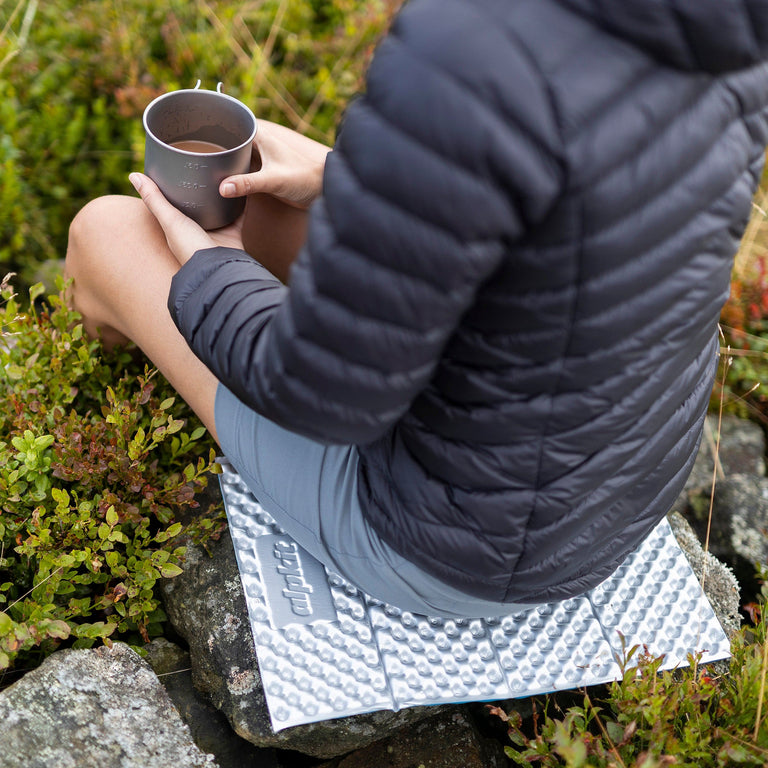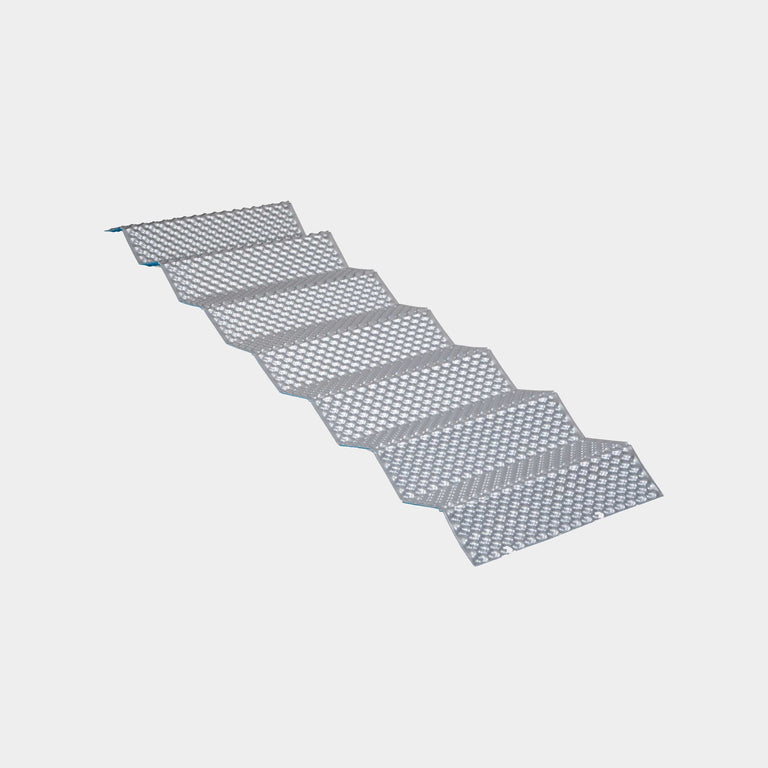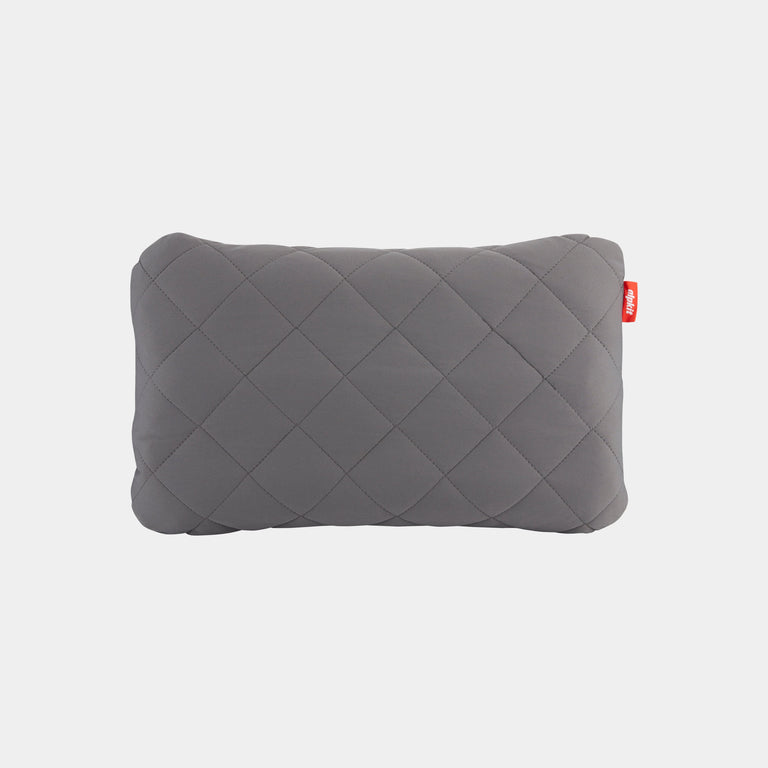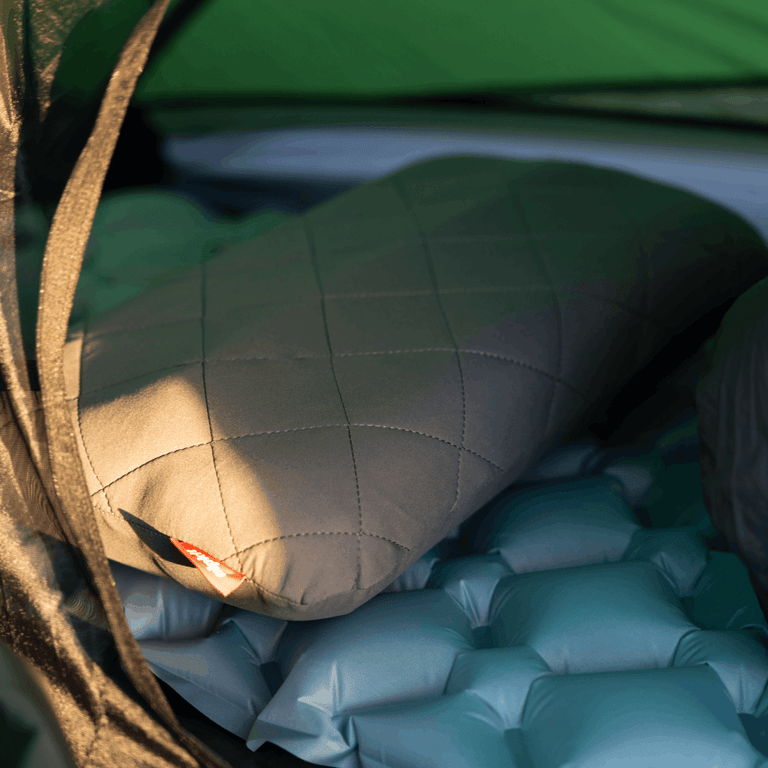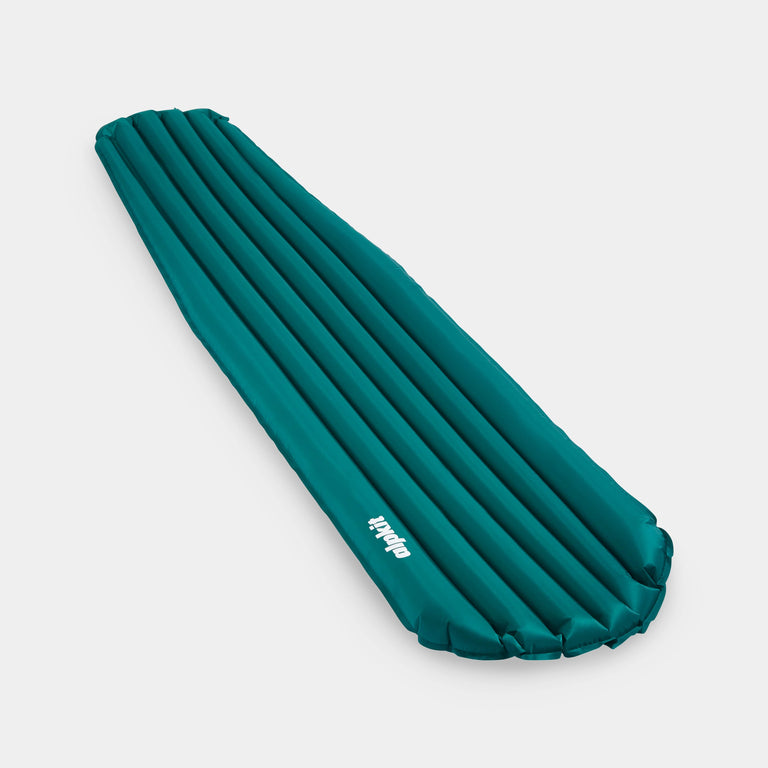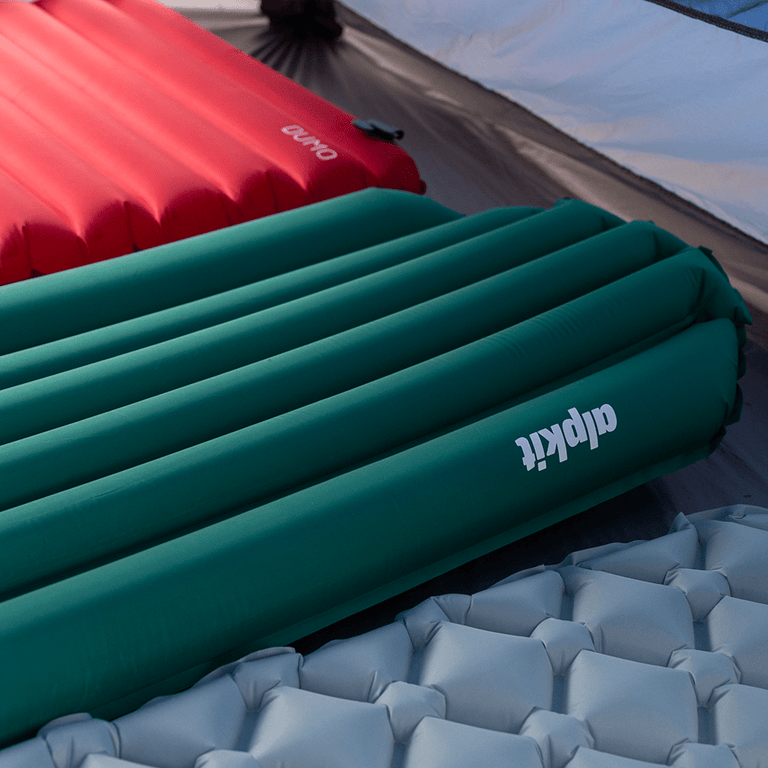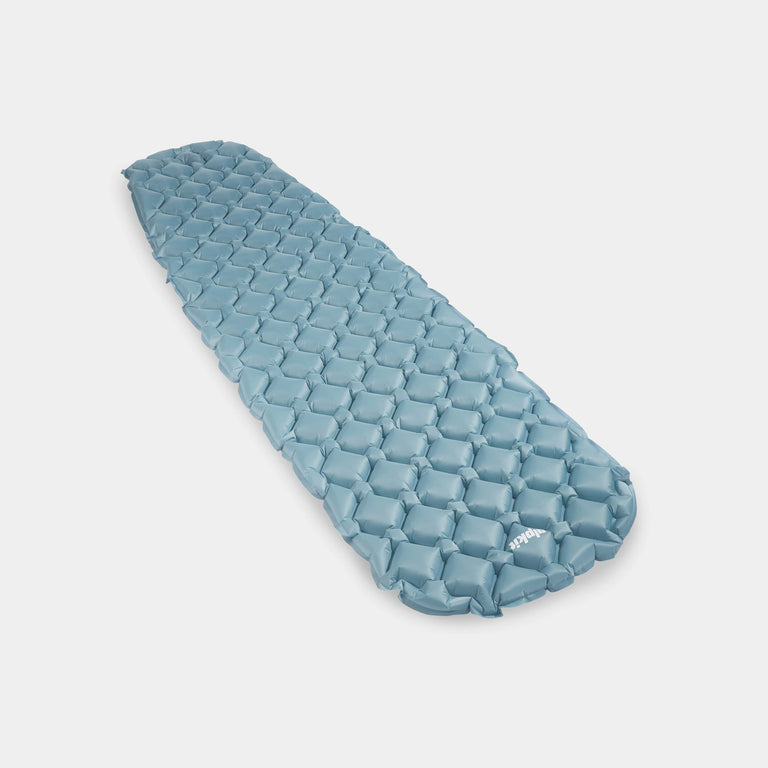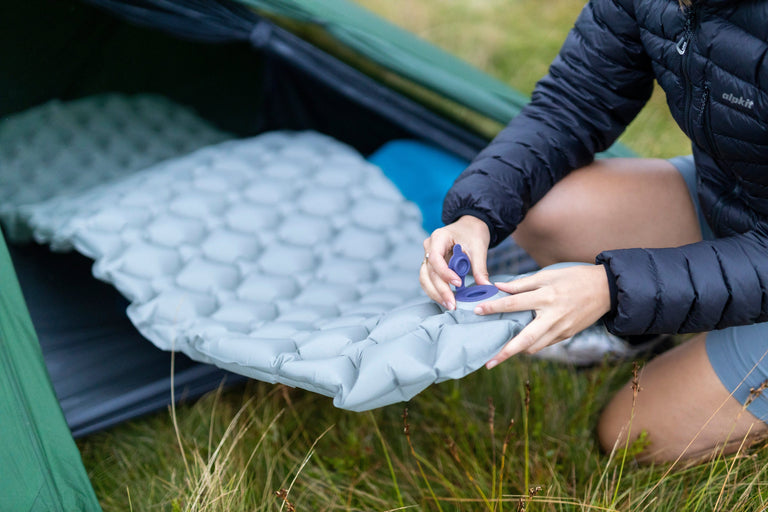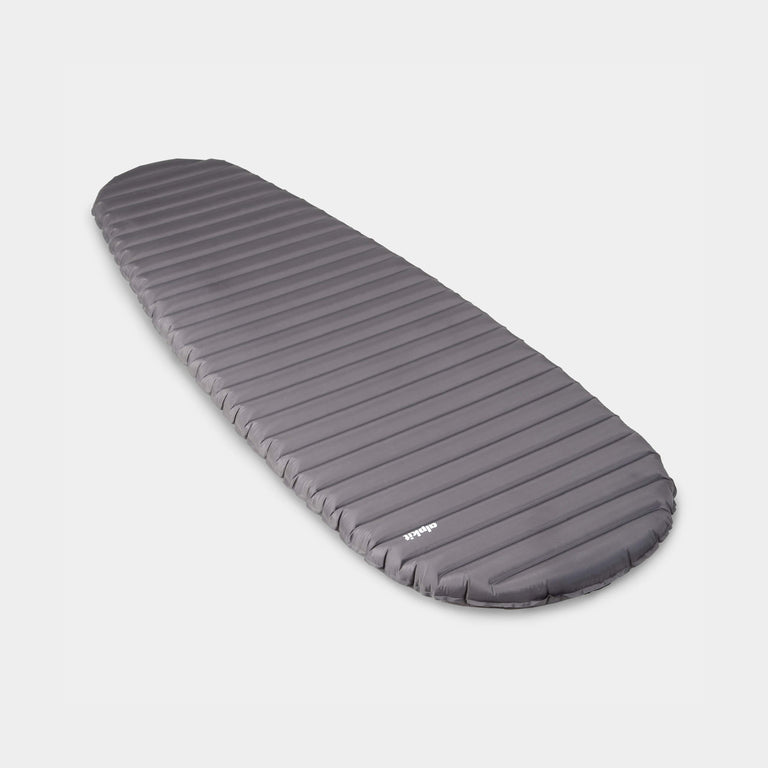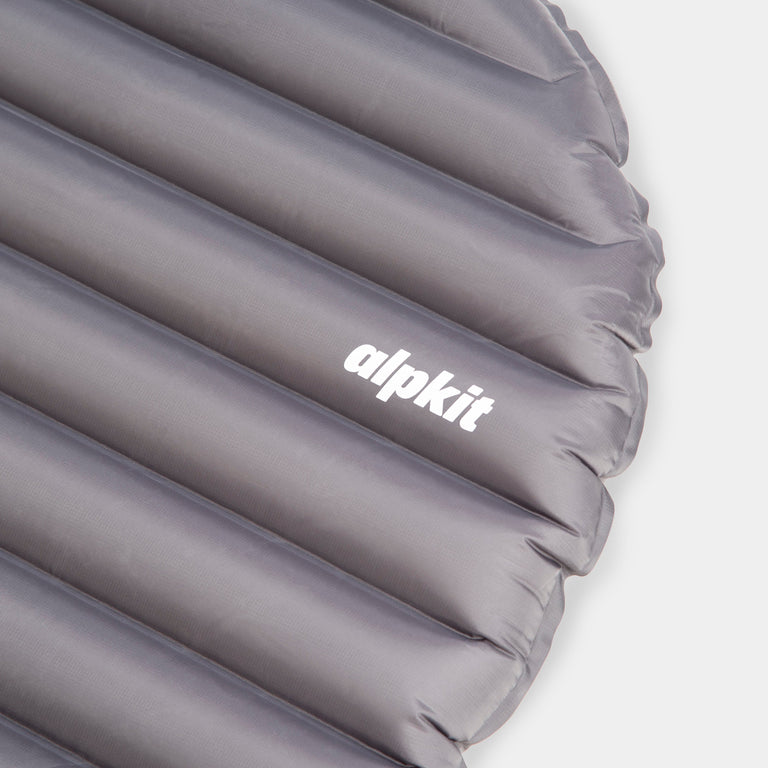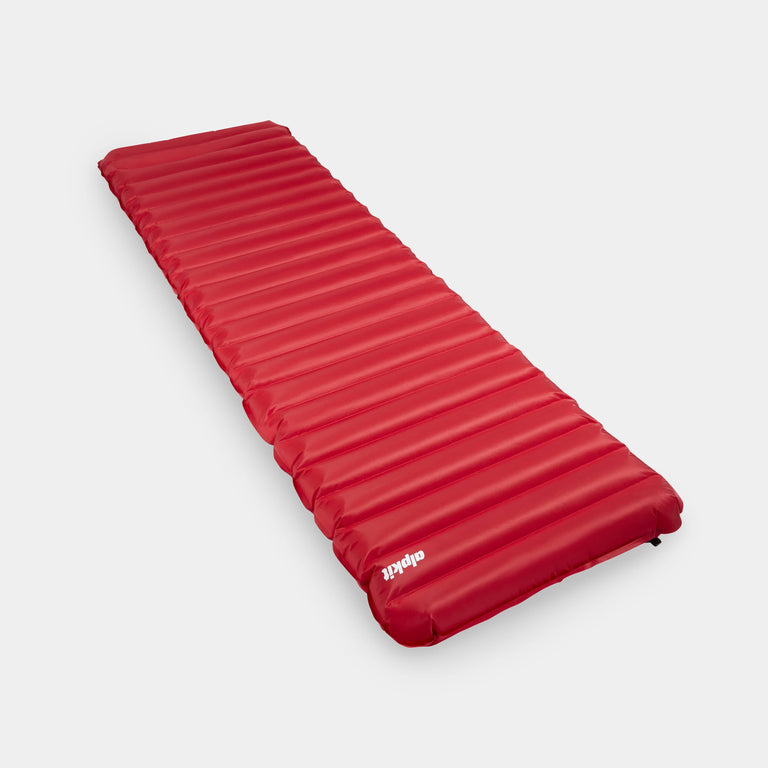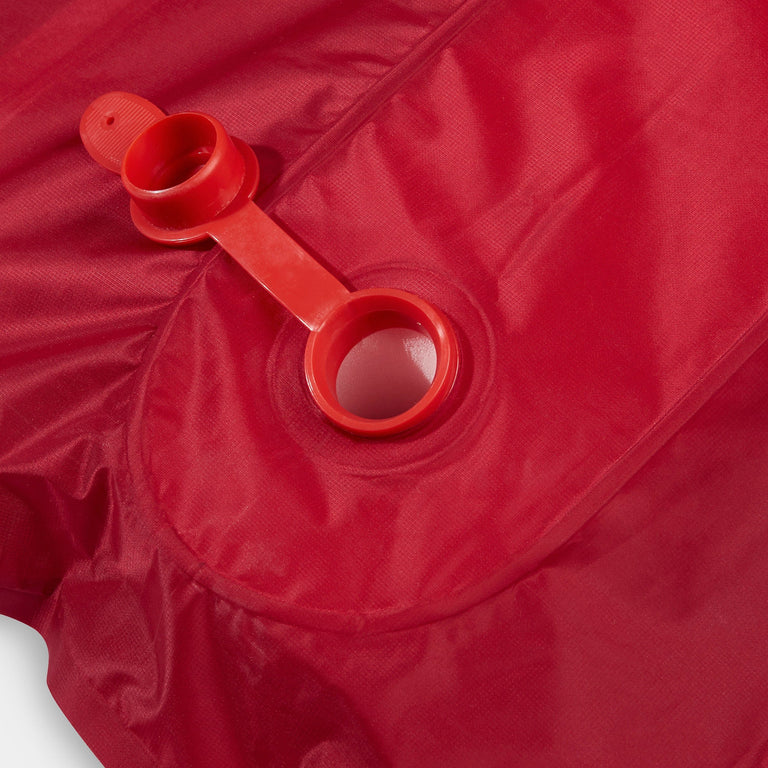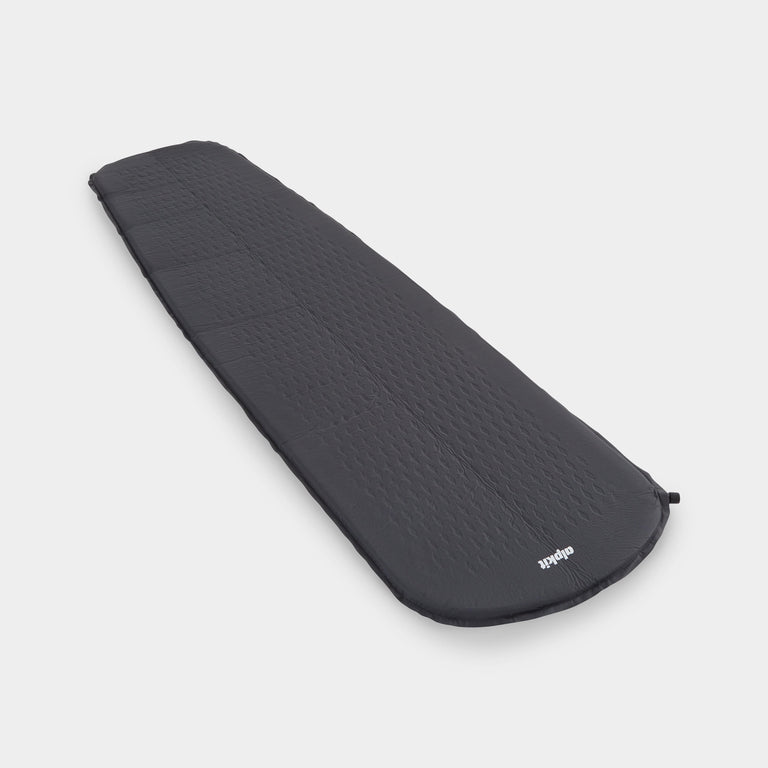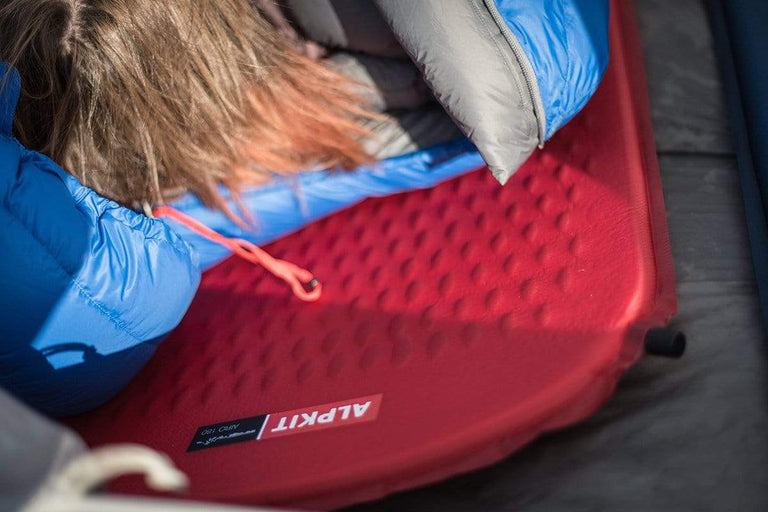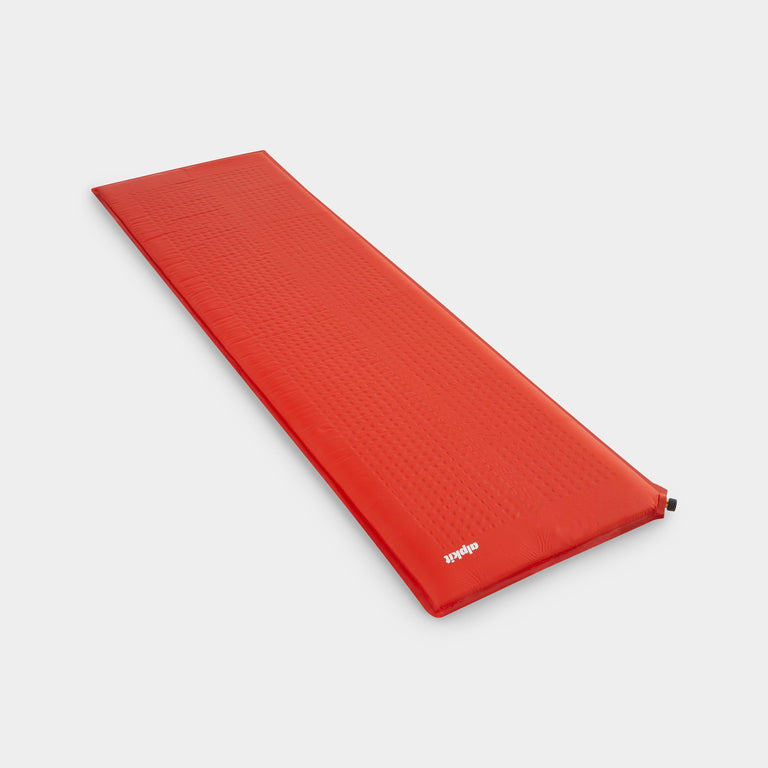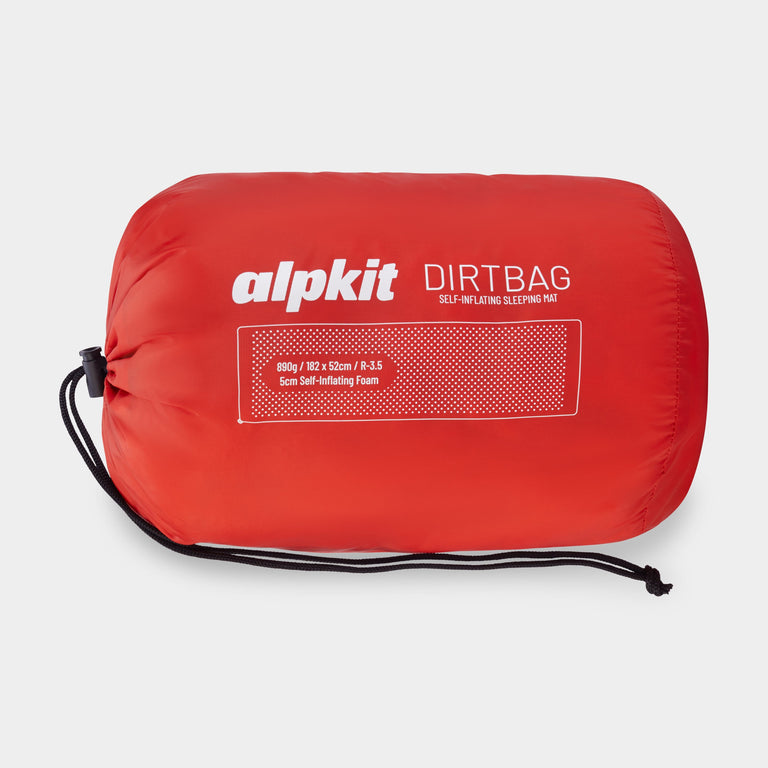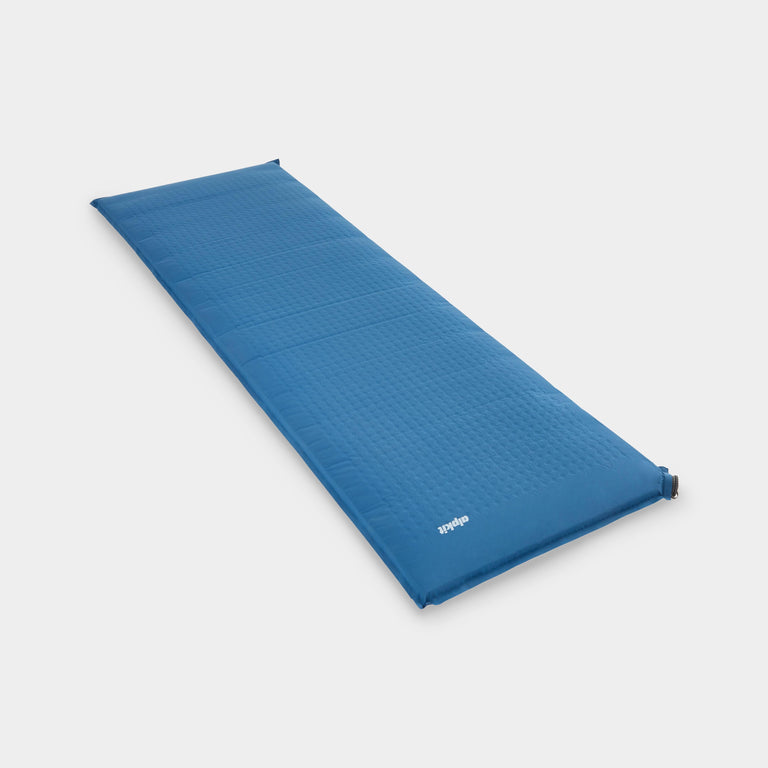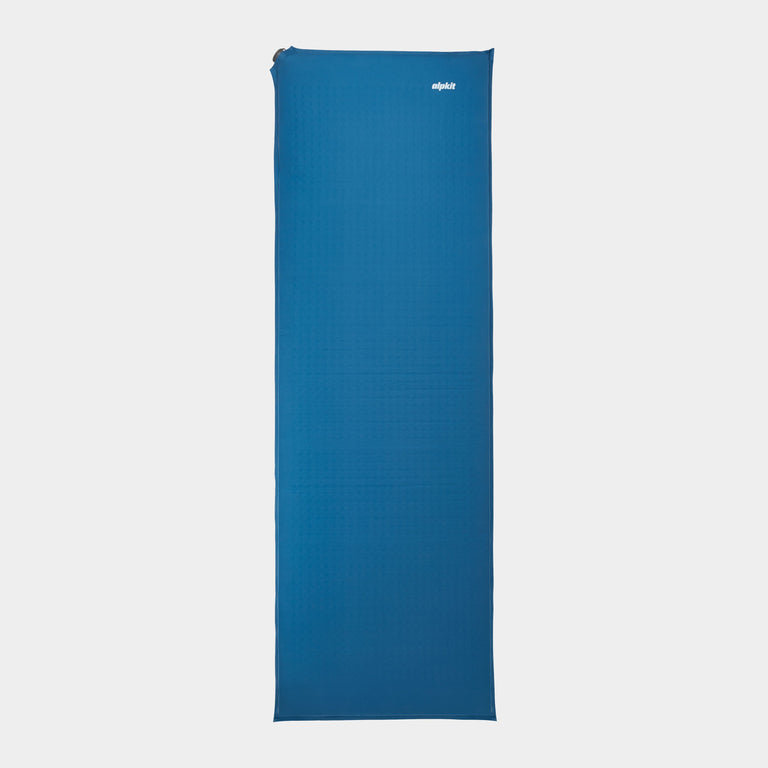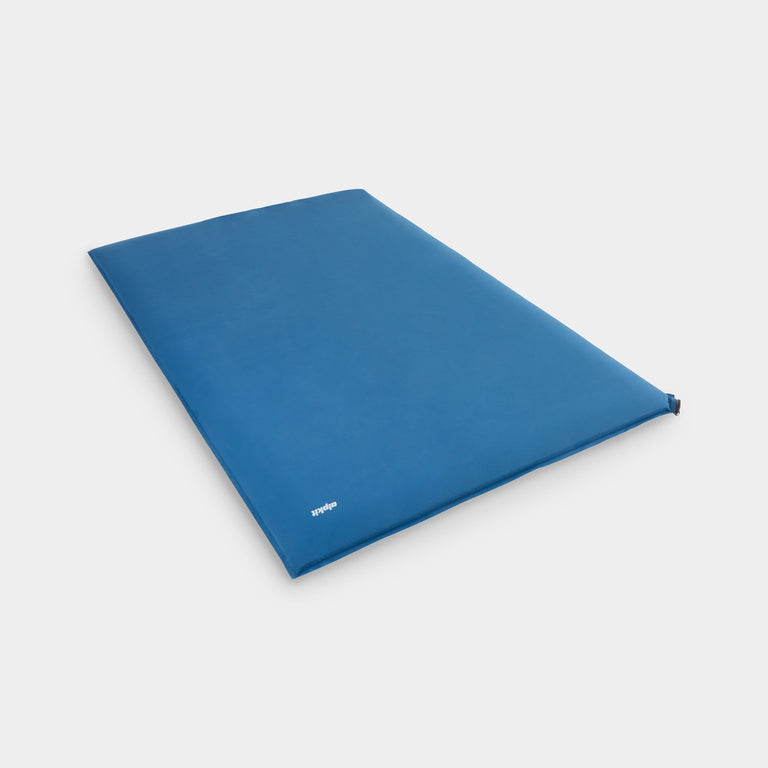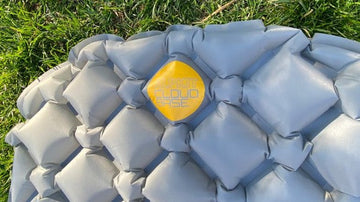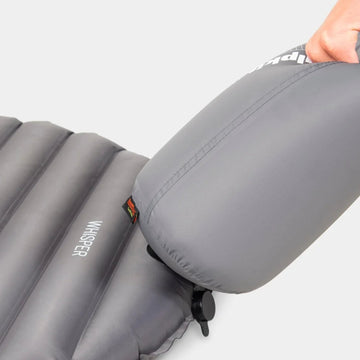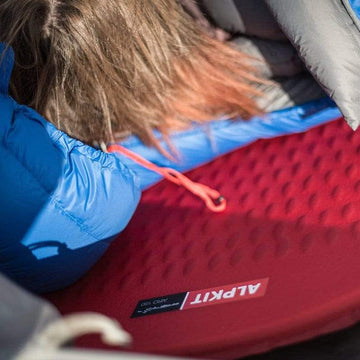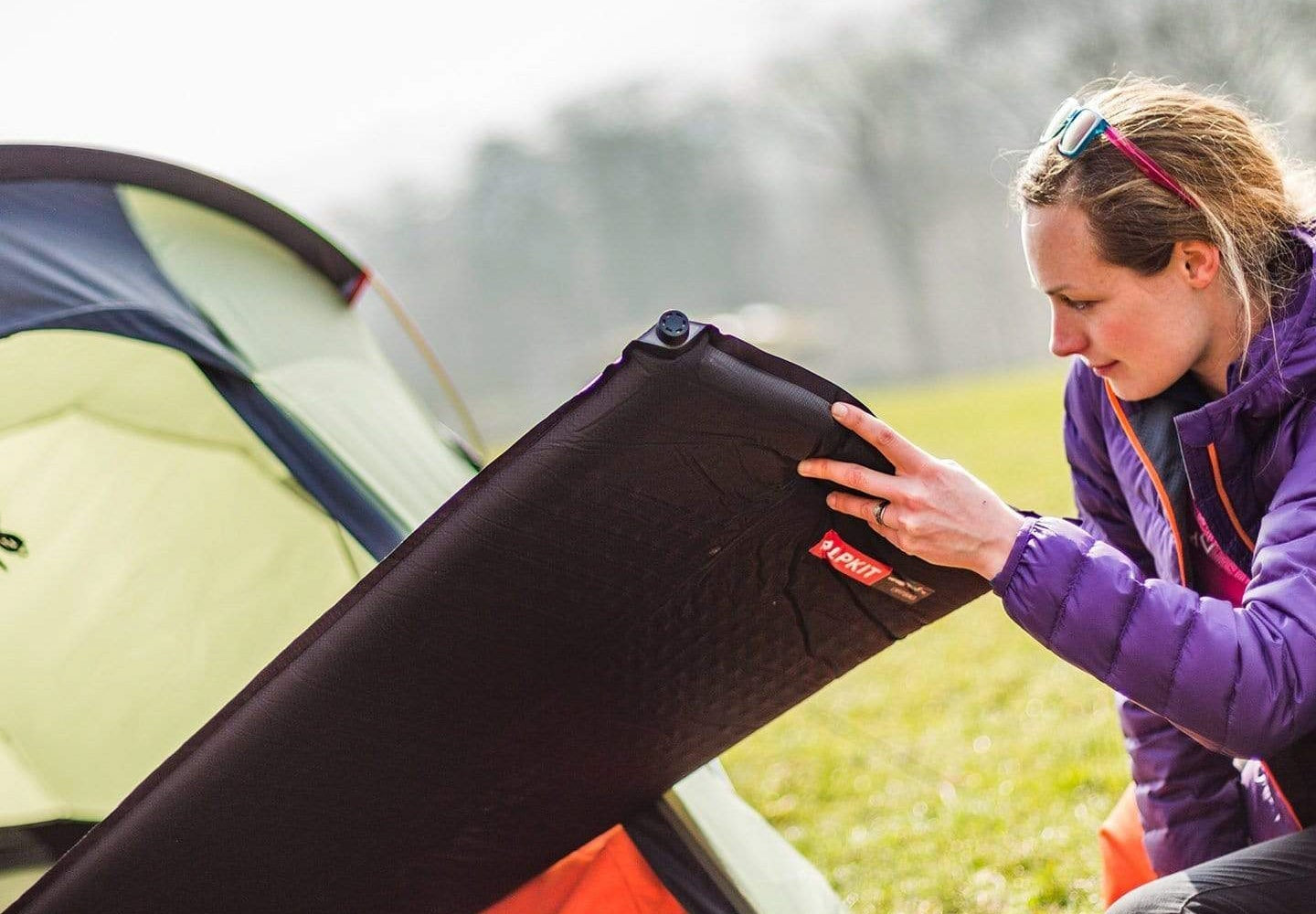
Self-inflating camping mats use compressible foam insulation and inflate like an airbed without requiring the use of an air pump. They are warmer than airbeds, and more packable than simple foam camping mats.
Self-inflating camping mats use compressible foam insulation and inflate like an airbed without requiring the use of an air pump. They are warmer than airbeds, and more packable than simple foam camping mats. They provide a comfortable and portable sleeping surface that can be carried with ease during camping, hiking, or other outdoor activities.
It sounds like magic, but there is science behind it. Here is how a typical self-inflating camping mat works:
- Air tight construction: Self-inflating mats are typically made from a durable outer layer that is laminated to open-cell foam. The foam is the magic component in the self-inflation process. When compressed, the open-cell foam structure is squashed and the air is pushed out, making the mat packable. However, when uncompressed, the foam naturally wants to expand back to its original form, drawing air back into the cells.
- Valve Design: The mat also contains one or more valves, which are generally closed when the mat is rolled up.
- Open the Valve and unroll the mat: When you're ready to use the mat, you unroll it and open the valve. The foam inside the mat starts to expand and suck air into the mat through the valve.
- Sit back and watch your mat self-inflate: As the foam expands, air gets pulled in causing the mat to inflate. This process can take a few minutes to half an hour, depending on the size and design of the mat.
- Top up for extra firmness: Self-inflating mats will inflate to about 80-90% of their full capacity. This is usually sufficient for comfort, however, if you want a firmer surface, you can add a few breaths of air. Close the valve as soon as you're done to prevent air from escaping.
- Deflating the mat: When it's time to strike camp, open the valve and roll the mat towards the valve. This action compresses the foam and pushes the air out. Once it's rolled up, close the valve to prevent air from getting back in.
6 things you need to know about self-inflating camping mats.
- What does self-inflating mean?
- How long does it take to inflate a self-inflating camping mat?
- Alpkit's sleeping mat construction
- What fabrics we use
- What is die cut open cell foam?
- Can I repair a self-inflating camping mat?
What does self-inflating mean?
Many inflatable camping mats - like airbeds - require either an air pump, air bag or for you to inflate the mat with your own breath. Self-inflating mats take advantage of the mechanical properties of foam to do the hard work for you.
How long does it take to inflate a self-inflating camping mat?
It takes just a couple of minutes to get a self-inflating camping mat to be semi-firm. Depending on how firm you like your camping mat you might need to add a couple of breaths of air to make the mat firm enough to sleep on.
How are self-inflating mats constructed?
To understand how a self-inflating mat is made, think about how you would make a cheese toastie. only the bread is replaced by fabric and the cheese replaced by foam! In fact, during the early development of Thermarest® (the very first self inflating mats), inventors Jim Lea and Neil Anderson used a highly modified sandwich maker to make their first prototypes!
But you can't just stick fabric together: you need a glue. In our very first sleeping mats (the Airic for the AlpHistory buffs), we used a thin membrane of TPU plastic that was laminated to the inner surface of the fabric, creating an airtight layer. Most high-end brands use this construction but, without careful monitoring, defects in the lamination can occur. We now use a patented PU coating instead which is more reliable and easier to ensure a high level of quality control. Cheaper mats may use a PVC coating as the "glue" to reduce costs but PVC is highly toxic and bad for the environment.

Fabrics
Our mats use a variety of different fabrics depending on their expected use. Many of our mats now use recycled fabrics.
40D Diamond Ripstop Nylon – Extremely hardwearing for its weight, we use this on our Airo 120 and Airo 180 mats. Treat your Airo with a bit of love and it will reward you with a good nights sleep, trip after trip.
50D Nylon – A bombproof hardwearing fabric that doesn't quite as much care as the lighter 40D. We use this on our Dirtbag mats to make them extra hardwearing without adding loads of unecessary weight.
75D Polyester – Polyester is the workhorse fabric in our range. We use it on the Dozer and Double Dozer because it offers great value for money whilst providing the durability required by a sleeping mat.
75D Peach Polyester – The surface of this fabric has been brushed during manufacturing to give it a softer feel than typical synthetic fabrics. We use this on the top of the Dozer and Double Dozer to make sure they feel just like your bed at home. (Well, you might not think so if you sleep in high thread count Egyptian cotton!)

Foam
Inside every self-inflating mat is a layer of die-cut open cell foam. We use open cell foam because it can be compressed easily for a smaller pack size, whilst still offering loads of insulation. It also recovers back to its original shape easily, helping the mat to self-inflate.
Open cell foam is so compressible because all the little air chambers inside the foam are interconnected, unlike the closed cell foam we use for traditional roll mats. Although air can pass in and out of the foam, it's very hard for air to circulate inside the mat when you're sleeping on it. Still air is highly insulating and it means you don't lose heat via convection like you can with inflatable sleeping mats.
What does Die-Cut foam mean?
Open cell foam pads can be cut in lots of different ways to produce the perfect balance of weight, inflation time and durability. A process called 'die cutting' can reduce the overall weight of a mat by up to 30%.
Matrix – This diamond-shaped pattern removes the maximum amount of foam whilst retaining enough material to allow the mat to self inflate and provide adequate insulation.
Dot Matrix – The circular pattern lightens the foam weight by around 20%. We use this in our thicker pads as there is enough foam retained to help provide support when using the mat partially inflated.
Selective Die Cut – When insulation and support are crucial to retain the mat's comfort, we only die cut the foam in low load areas, such as the feet.
Foam Coring – The foam core of a self-inflating sleeping mat has tiny circular cores of foam removed along the entire length (and sometimes the width) to create air inflation tubes. This helps the foam recover and inflate the mattress to its full thickness faster.
How do I repair a self-inflating camping mat?
Just like a bicycle inner tube, self-inflating camping mats punctures can be fixed with an adhesive patch. Every mat comes with a repair kit for this purpose.
Valve
The valve seals the air inside making it firm enough to sleep on without touching the ground beneath. Our Double Dozer has two valves to help it inflate and deflate quicker. The shapes of our valves makes it easy to continue blowing into the valve as you twist it to seal, ensuring that you can achieve the desired level firmness.
Stuff Bag
All our sleeping mats come with a storage sack as standard. The bag is tapered making it easy to slide the rolled mat inside and we include elastic compression straps so it doesn't unroll on you before you can get it in!. All alpkit sleeping mats come with a puncture repair kit should the worst happen while you're away. accidents happen! And pointy rocks do stick into backs.
